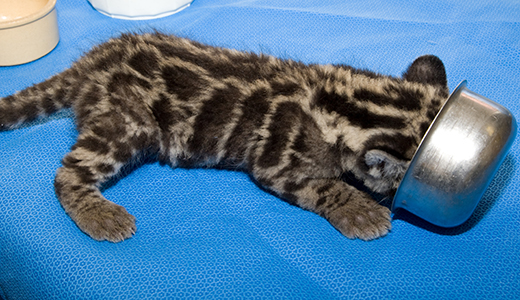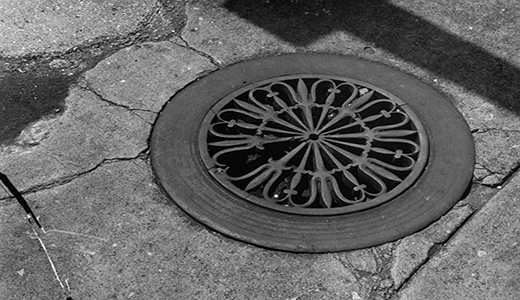 2022
2022
Clouded leopard, 2010. Photograph by Mehgan Murphy. Smithsonian’s National Zoo and Conservation Biology Institute.
A wild leopard has eluded capture in Belagavi, India, for nearly a month, attacking a construction worker and terrorizing residents. Officials believe the leopard stumbled into the city as encroaching development shrinks the available forest cover. The border district has been put on high alert, with schools, colleges, and other institutions closing or going online. The government has been running buses for those who have to leave home. Citizens have criticized authorities for the delayed capture, calling the leopard a “resident” of the city and Photoshopping its image on a ration card, voter ID, and bank statements. Others have voiced concern that the frontline team tasked with seizing the animal carry nothing but thin nets, lathis, and tranquilizers. On August 30 the city announced that the leopard had probably returned to the jungle:
“In the last three, four days, there has been no sign of the leopard. We are of the understanding that the big cat has returned to the jungle. Hence there is no need to panic,” Forest, Food, Civil Supplies, and Consumer Affairs Minister Umesh Katti said.
Despite roping in elephants, dogs, and tranquilizer experts, the efforts to trap the elusive leopards were unsuccessful.
Over three hundred personnel of the forest department and over a hundred police personnel are part of the hunt, which entered the twenty-sixth day on Tuesday. Twenty-two camera traps and eight cages were also placed in locations where the leopard was spotted, according to department officials.
 1889
1889
Sidewalk sewer cover in St. Louis, c. 1933. Library of Congress, Prints and Photographs Division.
The lion tamer Frank Bostock captured a lion that had escaped from his traveling menagerie into the sewers of Birmingham, England, in 1889, a story he recounted in his 1903 book The Training of Wild Animals. Bostock recalled how it took only twenty minutes for nearly every person in Birmingham (the population at the time was over 200,000) to find out that a wild animal had jumped out of its cage on the company’s opening day in the city. As the lion made his way through the sewers, he stopped under each manhole to roar, throwing the citizens into an uninhibited panic. In order to capture the lion, Bostock enlisted Birmingham’s chief of police and the superintendent of sewers for help and reinforcements. He wanted the assembled searchers to be ready to shoot the animal on sight if necessary.
Taking off my big jackboots, I put them on my hands and arms and, going up close to the lion, was fortunately able to hit him a stinging blow on the nose with one of them. Fearing that he would split my head open with a blow from one of his huge paws, I told one of my men to place over my head a large iron kettle that we had used to carry cartridges and other things to the sewer. While he was trying to fix this, the kettle tipped and rolled over and went crashing down the sewer, making a noise and racket that echoed and resounded throughout the whole length of the narrow tunnel in the most appalling manner.
The lion, who had resisted everything else in the way of capture, at once turned tail like a veritable coward and, racing down the sewer at a mad gallop, was soon lost to sight, as though the earth had suddenly swallowed him. He had caught his hind legs and quarters in one of the slip nooses that had been dropped down the manhole to secure him and was hanging head downward from the manhole. In this unkingly fashion the king of beasts was dragged out of his prison and into his cage once more.